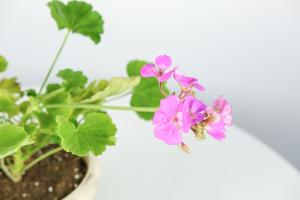Do Agricultural Plants Produce Oxygen Like Trees?
Agricultural plants have been an essential part of human life for thousands of years. They provide us with food, clothing, and shelter. We all know that trees are necessary for the survival of life on earth as they produce oxygen through photosynthesis. But do agricultural plants also produce oxygen like trees? Let's find out.
Photosynthesis and Oxygen Production
Photosynthesis is the process by which plants use sunlight, water, and carbon dioxide to produce glucose and oxygen. It is an essential process for the survival of plants and living organisms on earth. During this process, oxygen is released into the atmosphere as a by-product. Trees are known for their ability to produce high levels of oxygen due to their large size and extensive foliage. However, agricultural plants also undergo photosynthesis and produce oxygen, albeit in smaller quantities.
Agricultural Plants and Oxygen Production
Although agricultural plants produce oxygen, their oxygen production levels may not be as high as those of trees. This is because agricultural plants tend to be smaller and have fewer leaves compared to trees. Moreover, agricultural plants are often grown in concentrated areas, unlike trees that are spread across vast areas. The concentration of plants in one area could limit their ability to produce oxygen as they compete for light, water, and other resources needed for photosynthesis.
Also, many agricultural plants are grown for their fruits, vegetables, or grains. As these plants produce their desirable outputs, the oxygen produced tends to be consumed in the process of respiration within the plant. This reduces the amount of oxygen that is released into the atmosphere.
Environmental Benefits of Agricultural Plants
Although their oxygen production levels may be lower than that of trees, agricultural plants offer significant environmental benefits. They help reduce carbon dioxide levels in the atmosphere, regulate the water cycle, and contribute to soil health. Moreover, agricultural plants are an essential component of sustainable agricultural practices, which aim to produce food and fiber while minimizing damage to the environment.
Additionally, many agricultural plants function as habitats for various species of plants and animals. This contributes to biodiversity, which is necessary for the maintenance of ecological balance. The by-products of some agricultural plants, such as livestock manure or crop residues, can also be used as organic fertilizers, reducing the need for harmful chemical fertilizers.
Conclusion
In conclusion, agricultural plants do produce oxygen like trees, although in smaller quantities. However, it is essential to note that their environmental benefits are not limited to oxygen production. They play a significant role in the maintenance of ecological balance, contribute to soil health and biodiversity, and are an integral part of sustainable agricultural practices. Therefore, it is crucial to promote sustainable agricultural practices that balance economic, social, and environmental goals for a better future.

 how many times do yo...
how many times do yo... how many planted tre...
how many planted tre... how many pine trees ...
how many pine trees ... how many pecan trees...
how many pecan trees... how many plants comp...
how many plants comp... how many plants can ...
how many plants can ... how many plants and ...
how many plants and ... how many pepper plan...
how many pepper plan...
































